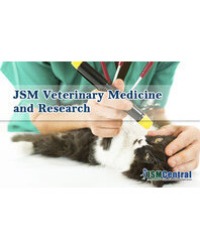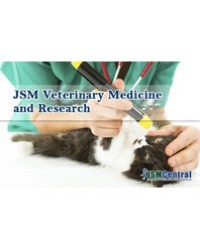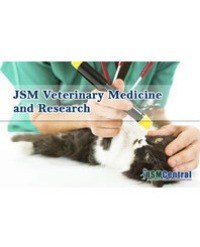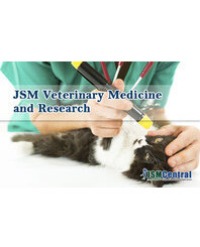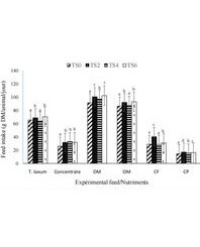
Effect of spirulina level on post-weaning growth of guinea pig Cavia porcellus in western Cameroon
For post-weaning growth performance evaluation in Guinea pig (Cavia porcellus), an 8-week trial was conducted in West Cameroon. 59 weaned animals (3 weeks of age) from a breeding trial were used. After identification and weighing, animals were submitted on the same treatment as their mothers. Each animal receives daily between 8 and 9 am, an experimental food corresponding to its group. Animals of TS0 group received Trypsacum laxum and the concentrate with 0% spirulina, while others received in their diets 2% (TS2), 4% (TS4) and 6% (TS6) spirulina. Food refusal was collected and weighed before the new distribution, for feed intake determination. During the growth period, T. laxum, concentrate and nutrients (Dry Matter (DM), Organic Matter (OM), Crude fiber (CF) and Crude Protein (CP)) intake was significantly affected by treatments. Highest animal average weight (407.0g) was obtained with treatment TS2 and the lowest (396.64g) with control (TS0). The same tendency was observed with total (TWG) and daily weight gain (DWG). Thus, the highest TWG and DWG (222.06 g and 6.34 g / day) were obtained in TS2 treatments while the lowest (194.82 g and 5.57 g / day) was obtained with TS0. At 8 weeks regardless of the birth type, highest average weight, total and daily weight gain was obtained with treatment TS6. At the same period for the same parameters, no significant difference was observed between treatments TS0, TS2 and TS4. Based on the result, food intake as animal body weight can be improved by 2% of spirulina in the diet but at 6%, growth performance can be improved mostly for the twin’s births
Généviève NGUEDIA1 , Emile MIÉGOUÉ1*, Fernand TENDONKENG1 , Camara SAWA2 , Henry FEULEFACK DEFANG3 , Josué FOSSI1 , Mouchili MAMA1 , Dayan Agwah EBILE1 , Yannick FONGANG1 et Etienne TEDONKENG PAMO1

